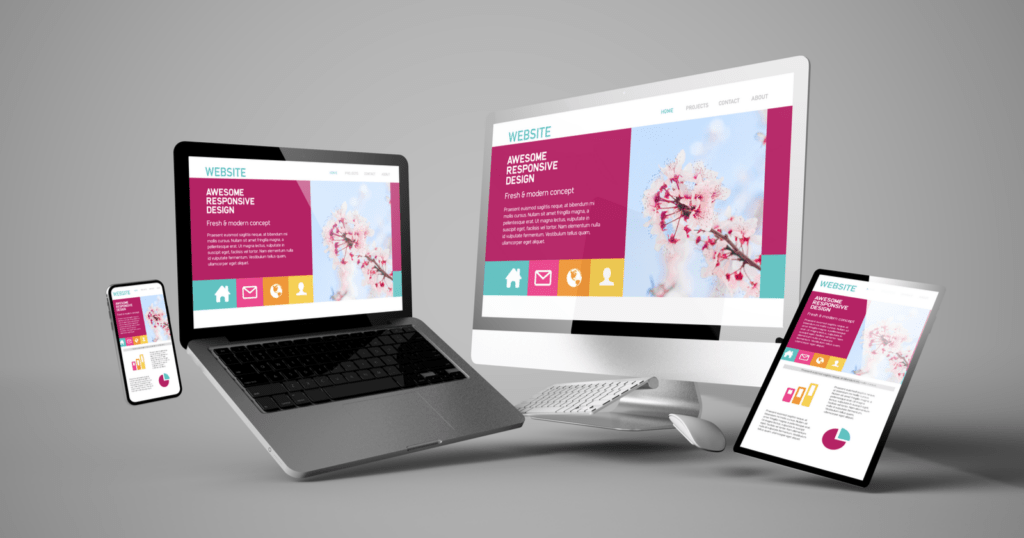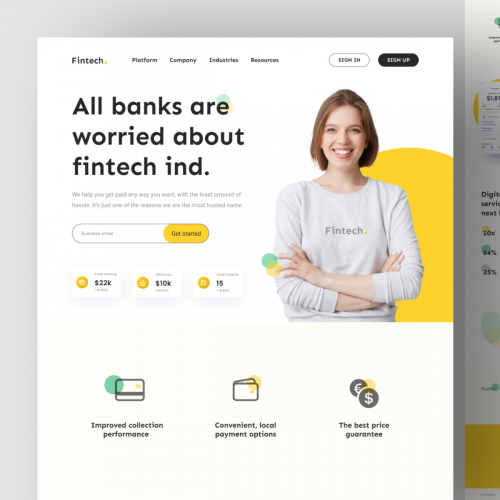Unique Website Design Solutions for Business Websites
Unique Website Design Solutions for Business Websites
Blog Article
Leading Tips for Creating an Impactful Site Style That Transforms
To accomplish this, one should consider a variety of factors, including recognizing the target audience, focusing on individual experience, and optimizing for mobile systems. The calculated use of engaging call-to-actions and a well-defined visual pecking order plays an important role in leading individuals through their trip.

Understand Your Target Market
Recognizing your target audience is fundamental to reliable web site design, as it prepares for producing an interesting user experience. Recognizing that your users are, including their demographics, choices, and behaviors, makes it possible for designers to customize the web site's material, layout, and performance to meet certain needs.
Performing extensive marketing research is vital in this process. Surveys, interviews, and analytics can give beneficial understandings into customer expectations and discomfort factors. By assembling this information, developers can produce individual personas that represent various sectors of the audience, ensuring that style choices are notified and pertinent.
Furthermore, recognizing the target audience assists in picking appropriate style components such as color design, typography, and images that resonate with users. An internet site that talks directly to its audience promotes a feeling of link and depend on, encouraging longer sees and higher conversion rates.
Inevitably, a user-centered strategy to website layout not just enhances individual fulfillment but also sustains business purposes by driving engagement and commitment. By prioritizing the requirements and choices of the target audience, a web site can effectively serve its purpose and achieve desired outcomes.
Prioritize Customer Experience
To boost the overall efficiency of a website, focusing on customer experience (UX) is essential (Website Design). A well-designed UX makes sure that site visitors can navigate the site effortlessly, find information quickly, and engage with material meaningfully. This leads to increased customer complete satisfaction and higher conversion rates
Begin by applying instinctive navigating. Menus must be practically structured, permitting customers to situate crucial areas of the website with marginal initiative. Uniformity in layout components, such as shade systems and typefaces, cultivates knowledge, which is crucial for maintaining user engagement.
Furthermore, think about the loading rate of your internet site. A hold-up of just a couple of secs can bring about substantial drop-offs, as customers are less most likely to await a slow-loading web page. Enhancing pictures and optimizing code can enhance efficiency and maintain visitors.
By prioritizing individual experience, you not just develop a much more delightful atmosphere for visitors however additionally enhance your brand name's reliability. Inevitably, a focus on UX is a financial investment in the long-term success of your web site.
Optimize for Mobile Gadgets
Maximizing for mobile gadgets is crucial in today's electronic landscape, where a raising number of individuals accessibility websites via smartphones and tablet computers. A mobile-friendly style not just enhances user experience however also plays a considerable role in enhancing search engine positions. To achieve this, it is necessary to useful link adopt a receptive layout that automatically gets used to different display sizes and positionings.

Loading speed is another critical factor; mobile users are usually much less person and expect rapid access to info. Optimize pictures and leverage internet browser caching to improve efficiency. Examination your website on numerous gadgets and display resolutions to determine and fix any type of possible functionality concerns. By prioritizing mobile optimization, you make certain that your web site remains competitive and effectively engages a more comprehensive audience.
Use Engaging Call-to-Actions
A website's efficiency often depends upon its ability to lead visitors towards wanted actions, making engaging call-to-actions (CTAs) essential elements of layout. CTAs work as the essential factors that direct users to engage with the site, whether that suggests buying, registering for an e-newsletter, or downloading and install a source.
To create effective CTAs, clearness is extremely important. Usage succinct language that clearly a knockout post communicates the action you desire the individual to take. Expressions such as "Obtain Begun," "Register Free," or "Store Now" not just share necessity but also eliminate uncertainty. The positioning of CTAs is just as vital; they need to be purposefully placed throughout the webpage to ensure they are easily visible, particularly in high-traffic locations.
Furthermore, the style of CTAs ought to stick out without being interfering. Employ contrasting colors and clear typefaces to guarantee they catch attention. Additionally, consider making use of directional hints, such as arrows or images, to lead individuals toward these switches. By focusing on these components, organizations can dramatically improve individual interaction, driving conversions and eventually attaining their website's goals.
Emphasis on Visual Pecking Order
Reliable site layout relies greatly on a well-structured visual pecking order that guides individuals via material perfectly. By arranging elements in a fashion that focuses on details, developers can enhance individual experience and promote decision-making. This involves using size, shade, comparison, and spacing tactically to accentuate one of the most crucial components of a page.
The use of bigger font styles for headings and subheadings develops a clear difference between different sections, allowing users to scan content effortlessly. Furthermore, using contrasting shades for buttons and calls-to-action can capture individual focus and urge interaction. Whitespace is an additional essential part; it avoids mess and allows users to focus on essential messages without diversions.
Pictures and graphics need to enhance the message while likewise adhering to the recognized power structure, reinforcing the overall message (Website Design). Uniformity in layout elements, such as color schemes and typography, further strengthens the visual hierarchy, making navigation intuitive

Verdict
In verdict, efficient site layout requires a comprehensive understanding of the target audience, prioritization of customer experience, and mobile optimization. Eventually, a well-executed website layout serves as a critical part in driving individual activities and accomplishing organization goals.
Report this page